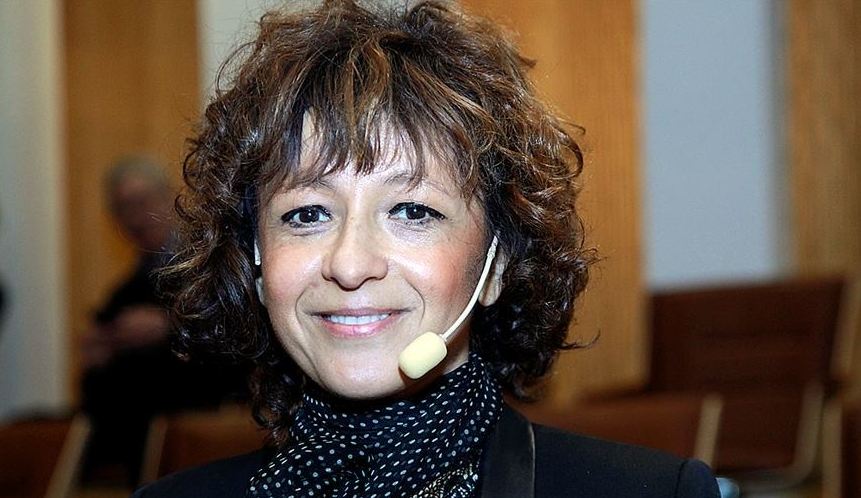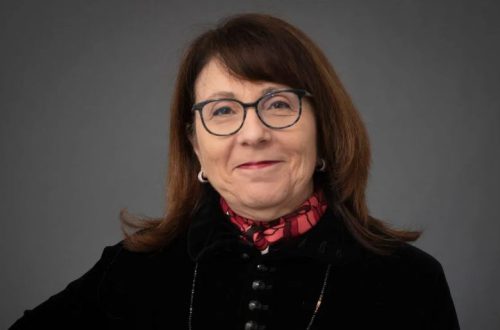
How to Contact Emmanuelle Charpentier: Phone Number, Fanmail Address, Email Address, Whatsapp, House Address

Emmanuelle Charpentier: 8 Ways to Contact Her (Phone Number, Email, House Address, Social media profiles)
Emmanuelle Charpentier: Ways to Contact or Text Emmanuelle Charpentier (Phone Number, Email, Fanmail address, Social profiles) in 2023- Are you looking for Emmanuelle Charpentier’s 2023 Contact details like her Phone number, Email Id, WhatsApp number, or Social media accounts information that you have reached on the perfect page.
Emmanuelle Charpentier Biography and Career:
Emmanuelle Charpentier, whose full name is Emmanuelle Marie Charpentier, is a French scientist. She was born on December 11, 1968, in Juvisy-sur-Orge, France, and is notable for her discovery of a molecular tool known as clustered regularly interspaced short palindromic repeats (CRISPR)-Cas9. This tool was found in collaboration with American biologist Jennifer Doudna.
Their discovery of CRISPR-Cas9 in 2012 established the framework for gene editing, which allows researchers to make highly exact alterations to DNA sequences. This was made possible by the fact that gene editing is now possible. CRISPR-Cas9 was both easier to use and more effective than the techniques that were used before to change genomic sequences. Both Charpentier and Doudna were awarded the Nobel Prize in Chemistry for their respective discoveries in the year 2020.
Charpentier spent his childhood in the suburbs of Paris, where he pursued a wide variety of hobbies. In 1992, she graduated with a bachelor’s degree in biochemistry after completing her undergraduate studies at Pierre and Marie Curie University, which eventually merged with Sorbonne University. Her postgraduate work was done at the Pasteur Institute, where she researched regions of bacterial DNA that may migrate throughout the genome and transmit drug resistance between cells. Her research was published in a scholarly journal.
After receiving her Ph.D. in microbiology in 1995, she continued her research career at the Pasteur Institute for the following year in the capacity of a postdoctoral researcher. Her postdoctoral studies were placed at Rockefeller University in New York City, where she remained for the duration. After beginning her career as an assistant research scientist at the New York University Medical Centre, she went on to serve as a research associate at the St. Jude Children’s Research Hospital in Memphis and, later, at the Skirball Institute of Biomolecular Medicine in New York City.

In 2002, Charpentier relocated back to Europe and began working as a researcher at the University of Vienna. There, she found a regulatory RNA molecule that regulates virulence factors in the Streptococcus pyogenes bacterium. This was her discovery. Charpentier was able to identify tiny new RNAs in the S. pyogenes genome with the assistance of a molecular microbiologist named Jorg Vogel, who worked at the Max Planck Institute for Infection Biology in Berlin. Charpentier then began researching the CRISPR system that is used by the bacterium.
This is a component of the organism’s overall defense mechanism against viruses. She was surprised to find out that the S. pyogenes CRISPR system has just three components: tracrRNA (which stands for trans-activating CRISPR RNA), CRISPR RNA, and Cas9 protein. This is a far more straightforward organization than she had expected.
At the Ume Centre for Microbial Research in Sweden in 2009, Charpentier continued her work on the CRISPR system. Charpentier demonstrated how the CRISPR system could cut and change DNA at precise sites in the genome with the aid of Elitza Deltcheva, who had been a graduate student in Charpentier’s research in Vienna.
In particular, Deltcheva offered evidence that tracrRNA and CRISPR RNA interact with one another to direct Cas9 to certain stretches of DNA. Charpentier, Vogel, and Deltcheva announced their findings in 2010. The year after that, Charpentier made the acquaintance of Doudna. The two scientists did not waste any time in getting to work on their joint project, which resulted in the discovery of the mechanism by which Cas9 cleaves DNA in the year 2012.

After that, the technology was put to use and was very successful when it came to targeting and modifying certain sequences in the genomes of a variety of different creatures.CRISPR Therapeutics, a firm that uses the CRISPR technique for gene therapy in humans, was one of the companies that Charpentier co-founded in 2013. The company has operations in Cambridge, Massachusetts, and its headquarters are located in Zug, Switzerland.
Charpentier was someone who served on the scientific advisory board for the corporation. After working for the Hannover Medical School in Germany for a period of two years, Charpentier relocated her laboratory to the Max Planck Institute in the year 2015.
Among the many accolades and prizes that have been bestowed upon Charpentier are the Canada Gairdner International Award (2016) and the Kavli Prize in Nanoscience (2018). Both the European Academy of Sciences and Arts (2018) and the Royal Swedish Academy of Sciences (2015) accepted her candidature for membership in their respective academies.
At the beginning of September, Charpentier made the trip to Yerevan, Armenia, to participate in the Starmus VI Festival as one of the key speakers. In an interview with EL PAS, the researcher reveals that she is still working towards the same aim as she was years ago: discovering new methods of gene editing to tackle illnesses that are resistant to antibiotics.
Already, more lives are lost to these superbugs than to AIDS, malaria, and certain cancers combined. According to her, one of the biggest threats we face is the fact that the fundamental sciences, which involve years of arduous effort, are no longer appealing to young people. This is a problem because, in the future, we will need young people to discover new treatments and cures. This interview has been condensed and modified for both readability and comprehension’s sake.
Recent recipients of the coveted Nobel Prize in Chemistry include Emmanuelle Charpentier of France and Jennifer A. Doudna of the United States. Both of these women are scientists who have made significant contributions to the field of chemistry. They received the prize for discovering a technique known as CRISPR for modifying genomes.

Emmanuelle Charpentier Profile-
- Famous Name– Emmanuelle Charpentier
- Birth Sign- Sagittarius
- Date of Birth– 11 December 1968
- Birth Place– Juvisy-sur-Orge, France
- Age – 54 years (As 0f 2023)
- Nickname– Emmanuelle Charpentier
- Parents– Father: NA, Mother: NA
- Sibling– NA
- Height– 5 feet 11 inches
- Profession– Professor
- Twitter Followers: 5707 Followers
- Total Insta Followers: 1351 followers
- Total YouTube Subs: NA
Emmanuelle Charpentier’s Phone Number, Email, Contact Information, House Address, and Social Profiles:

Ways to Contact Emmanuelle Charpentier :
1. Facebook Page: NA
2. YouTube Channel: NA
3. Instagram Profile: @emmanuelle__charpentier
Emmanuelle Charpentier also has her Instagram profile, where she gained a million followers and got around 100k likes per post. If you want to see her latest pics on Instagram, you can visit through the above link.
4. Twitter: @e__charpentier
5. Phone number: +49 30 28460-410
6. Fan Mail Address:
Emmanuelle Charpentier
Juvisy-sur-Orge, France
7. Email id: NA
8. Website URL: https://www.emmanuelle-charpentier.org/
Read Also: How to Contact Susan Solomon: Phone Number, Fanmail Address, Email Address, Whatsapp, House Address



